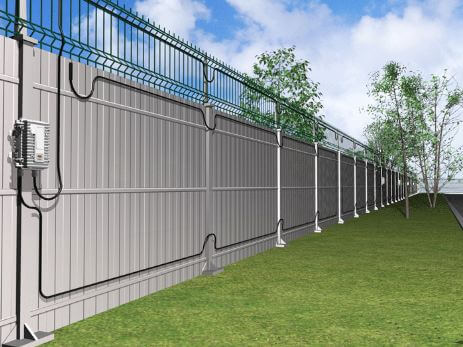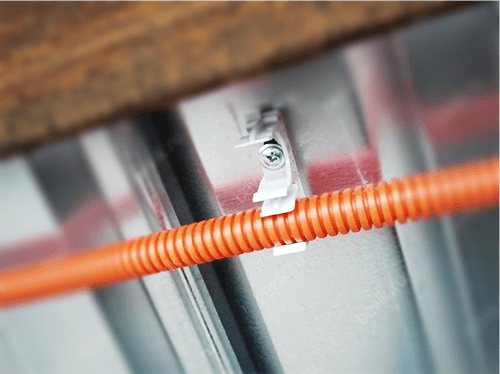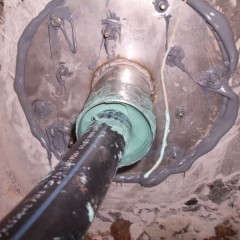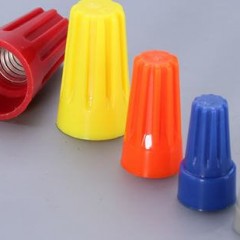How to lay the fence cable according to the rules
Installation Requirements
The entire set of elements intended for laying the cable in the classic version is called a cable structure, the fence on the site is not included in this category. PUE allows installation on so-called non-cable structures, which may be played by a fence, however, during installation, it is necessary to fulfill the conditions in order not to deviate from the requirements of regulatory documents.
Installation requirements are much less if an armored conductor is used for laying, but this is not always convenient and affordable, therefore, in the future we will consider the option of working with cables PVA or VVGNG-LS, deservedly having won the widest use for a successful combination of parameters such as price and quality. Their conductive conductors are made of copper, and the insulation is made of polyvinyl chloride (PVC).
PVA and VVG cables, as unarmored, must be laid at a height of not less than 2 meters, otherwise they must be provided protection against mechanical damage, that is, they, in accordance with the PUE, must be laid in a pipe, in a box or protected by a steel corner, etc., as indicated in paragraph 2.3.39 of the PUE (Chapter 2.3).
Gasket Options
It is advisable to consider options for how to conduct a cable along the fence, if the height of the fence reaches 2 meters and above, or if the fence is less than 2 meters high, it is made of corrugated board, wood or brick. Consider the rules for laying the line in each case.
The height of the fence is from 2 meters. The simplest option, in this case, there is no need to arrange cable protection from mechanical damage. It will be enough to pull a steel cable between 1-2 columns of fence with a diameter of 1-2 mm, to which a conductor can be fixed with nylon clamps, approximately as in the photo below.This installation method is the simplest in execution, requires relatively low material costs, meets fire safety requirements, if the fence is made of wood. You can learn more about cable wiring from the article:https://our.electricianexp.com/en/texnologiya-prokladki-kabelya-na-trose.html.
The fence is less than 2 meters high, made of corrugated board. In this case, in order to protect the cable, it must be laid in boxes or pipes. It will be unprofitable to use steel products for protection, so it is better to use pipes made of plastic, which are conveniently fastened with clips to the fence posts. There is the easiest way to solve the problem - put the cable in a plastic corrugation. The gray corrugated PVC pipe is very fragile, especially since over time under the influence of the sun and high temperatures, it significantly loses its strength properties. For these reasons, its protective function is very negligible. The use of corrugation can serve to a greater extent as a formal fulfillment of the requirements of the PUE, for presentation to control organizations. If you lay the cable in the corrugation along the street - it is better to buy a black corrugation made of polyethylene. When using a corrugation, the regulatory requirement should be taken into account, the meaning of which is that the step of its fastening along the entire length of the wiring to the bearing surface should not exceed 1 meter. Photo is an example of fixing corrugations on a fence from corrugated board:
Fence less than 2 meters high, made of wood materials. A feature of cable laying on a wooden fence is that the products for its protection should consist of non-combustible materials. Using metal pipes or a corner as protection is very expensive and not every homeowner or landlord can afford such expenses just to route the cable around the site, so as an economical option, you can use a corrugated metal pipe.
Fence less than 2 meters high made of brick or stone. In this case, when laying the conductor, all safety measures should be performed, as for the fence sewn with corrugated board. Cable mount to produce according to the same technology that is used when installing open wiring on the walls.
So we looked at how cable routing along the fence can be done. We hope that the provided PUE rules and installation methods helped you to draw the line correctly with your own hands!
Surely you do not know:










